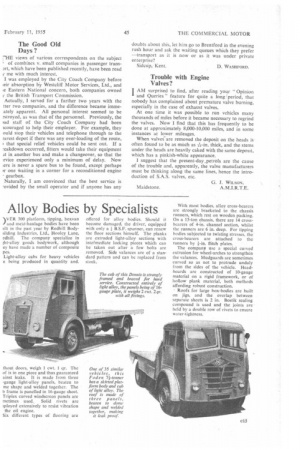The Good Old Days ?
Page 55

If you've noticed an error in this article please click here to report it so we can fix it.
THE views of various correspondents on the subject • of combines v. small companies in passenger trans3rt, which have been published recently, have been read y me with much interest.
I was employed by the City Coach Company before teir absorption hy Westcliff Motor Services, Ltd., and re Eastern National concern, both companies owned y the British Transport Commission.
Actually, I served for a further two years with the tter two companies, and the difference became immeately apparent. All personal interest seemed to be ;stroyed, as was that of the personnel. Previously, the iad staff of the City Coach Company had been tcouraged to help their employer. For example, they ould stop their vehicles and telephone through to the ;arest depot if there was any over-loading of the route, that special relief vehicles could be sent out. If a -eakdown occurred, fitters would take their equipment it in another bus and make a changeover, so that the rvice experienced only a minimum of delay. Now Lere is never a spare bus to be found, except perhaps ir one Waiting in a corner for a reconditioned engine gearbox.
Naturally, I am convinced that the best service is -ovided by the small operator and if anyone has any doubts about this, let him go to Brentford in the evening rush hour and ask the waiting queues which they prefer —transport as it is now or as it was under private enterprise?
Sidctip, Kent. D. WASHFORD.
Trouble with Engine Valves?
I AM surprised to find, after reading your "Opinion A and Queries" feature for quite a long 'period, that nobody has complained about premature valve burning, especially in the case of exhaust valves.
At one time it was possible to run vehicles many thousands of Miles before it became necessary to regrind the valves. Now I find that this has frequently to be done at approximately 8,000-10,000 miles, and in some instances at lower mileages.
When valve are removed the deposit on the heads is often found to be as much as thick, and the stems under the heads are heavily caked with the same deposit, which has a pinkish-white appearance.
suggest that the present-day _petrols are the cause of the trouble and, apparently, the valve manufacturers must be thinking along the same lines, hence the introduction of S.A.S. valves, etc.
G. J. WILSON, Maidstone. A.M.I.R.T.E.
















































































































